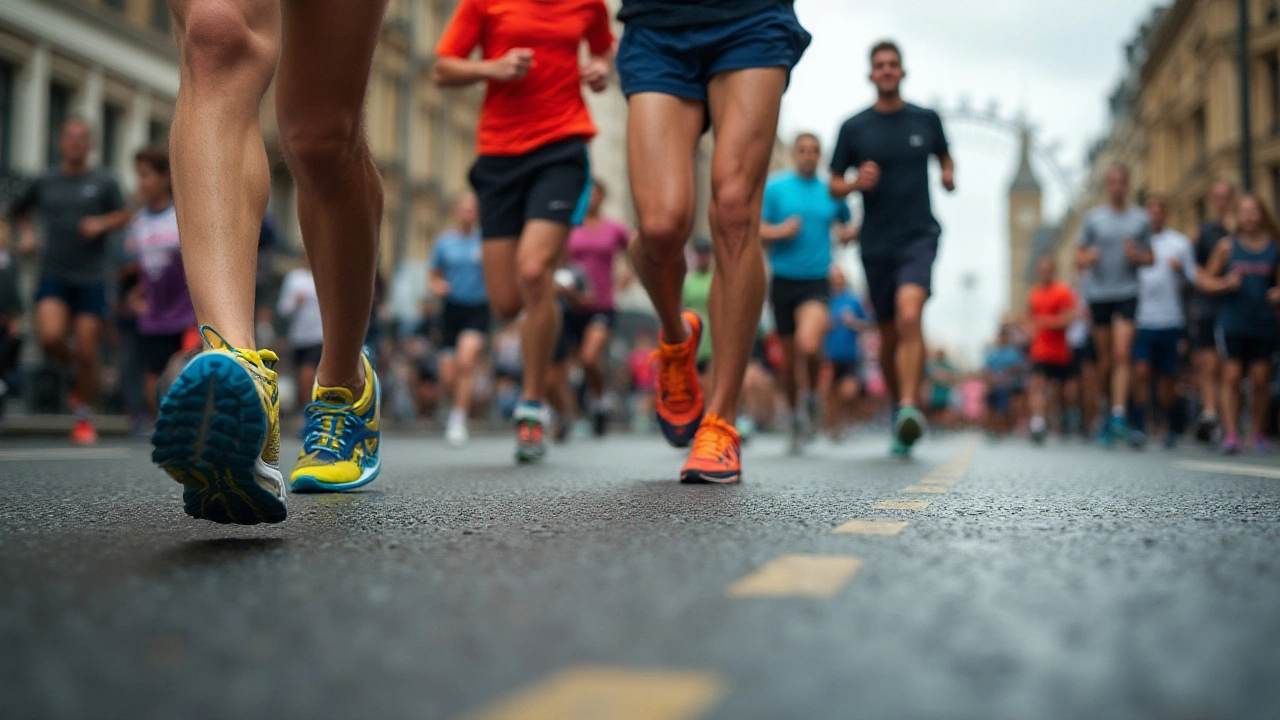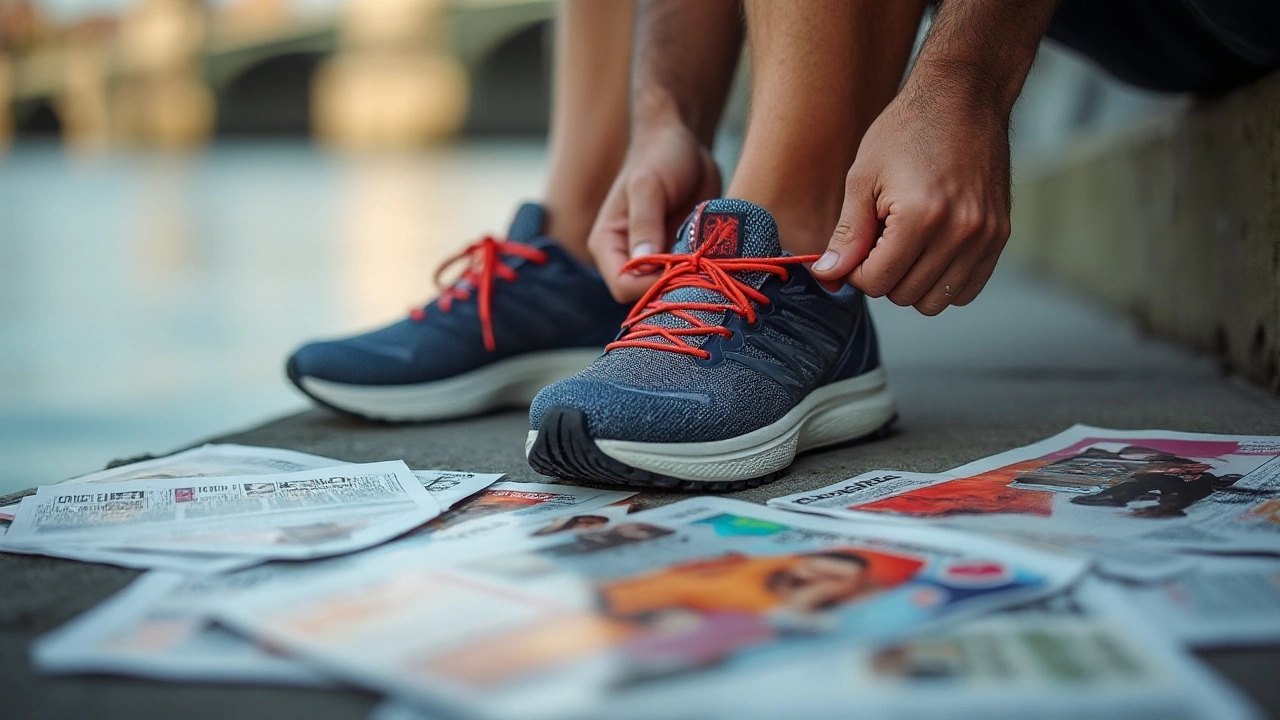How to Find the Perfect Running Shoe on Any Budget

Running shoes are more than just a piece of gear—they're your trusted companions on every trail, track, and sidewalk. With a plethora of options available, ranging from budget buys to high-end models, understanding what defines a good running shoe—and how much you should expect to pay—is crucial.
In this article, we unravel the mystery behind the cost of running shoes, dissect the features that really matter, and guide you through finding the perfect pair without breaking the bank. Whether you're a seasoned marathoner or a casual jogger, there's something here for everyone looking to lace up for their next run.
Understanding Shoe Prices
When it comes to buying running shoes, the price tag can sometimes feel like it has a mind of its own. Many factors contribute to these price variations, from brand reputation to the technology embedded in each pair. It's essential to understand what you are paying for to make an informed decision. Not every expensive shoe is inherently better, but the cost can often reflect features and durability that are worth considering.
Brand recognition plays a significant role in shoe pricing. Well-known brands like Nike, Adidas, and Asics charge a premium due to their longstanding credibility and consistent quality. These companies invest heavily in research and development to introduce features that enhance performance and comfort. Under Armour, for example, launched a shoe reported by Forbes to significantly reduce underfoot fatigue using Hovr technology.
"Our mission is to make athletes better through passion, design, and the relentless pursuit of innovation,” says Kevin Plank, founder of Under Armour.These innovations drive prices, often translating into enhanced user experience.
Material selection is another key driver of cost. High-tech fabrics such as Flyknit or Gore-Tex offer improved ventilation, water resistance, and an overall lighter shoe, which can impact the price. One could argue that while cheaper materials help bring down costs, they might compromise on performance over time. Investing in quality construction means your shoes can withstand more mileage, saving you money in the long run since you won't be replacing them as often. An inner component known as the midsole affects the cost too. Midsoles that employ EVA foam or gel cushioning provide extra comfort but come at a higher price compared to basic foam.
Let's not forget about design and aesthetics. While some runners prioritize performance over style, there is a growing trend of lifestyle runners who wear these shoes for their looks as much as their functional attributes. This trend has pushed brands to release limited editions and collaborations with designers, which find their appeal in exclusivity and bring their own pricing dynamics into play. Such models often bear heftier price tags, attracting collectors and casual runners alike with their unique designs.
Today's market offers a range of options for all types of runners. Price guides consumers, but the wise choose based on a blend of personal needs, whether those are linked to support, style, or specific conditions like pronation. Understanding where you fit on this spectrum can help you select the best shoe without feeling pressure to overspend. But don't worry if you're still weighing options—the next part will dive into which features truly deserve your attention.

Features to Look For
Finding the right pair of running shoes isn't just about choosing the sleekest design or the flashiest colors—it's about securing the features that will support your feet through every mile. A good running shoe should advance your performance while keeping injuries at bay. Here, we dive into essential aspects to consider when shopping for your next pair.
A quality running shoe begins with the right fit. The golden rule is to ensure there's about a thumb's width of space from your longest toe to the end of the shoe. This allows room for foot expansion, which naturally occurs during runs. Misfitting shoes can lead to blisters, black toenails, or worse, long-term foot conditions. Using the Brannock device for measuring foot size is still a reliable method, as it takes into account the length, width, and arch of your foot.
The midsole cushioning is another crucial element. It absorbs the impact every step generates, easing the strain on muscles and joints. Running shoe companies like Hoka One One and Brooks integrate advanced cushioning technologies to deliver superior shock absorption. Brands often use EVA (ethylene-vinyl acetate) or TPU (thermoplastic polyurethane) materials in midsoles for varied cushioning experiences. Studies show that softer midsoles often result in a more comfortable ride for distance runners.
Considering the pronation type—how your foot rolls inward when you run—is essential for choosing the correct support. Neutral pronators can opt for shoes with balanced cushioning, while overpronators might need stability shoes with medial supports to correct excessive inward rolling. Meanwhile, underpronators or supinators require neutral or cushioned shoes to compensate for the outward roll. Many shoe brands have designs accommodating these different pronation types. Properly addressing pronation can prevent common injuries such as plantar fasciitis and shin splints.
The shoe's outsole material also plays a significant role. This is particularly true if you're running on specific surfaces. For road running, a lighter, more flexible outsole may prove beneficial, while trail running necessitates more aggressive tread patterns and durable materials for grip and protection. Rubber compounds like carbon rubber offer durability, whereas blown rubber ensures cushioning and flexibility. Some shoes offer removable spikes for athletes involved in cross-country events, lending stability on slippery paths.
Lastly, the upper construction should provide a breathable yet supportive experience. Mesh uppers are prevalent in most modern running shoes because they foster airflow, keeping feet cool and reducing sweat buildup. Seamless construction reduces points of irritation, further enhancing comfort. Moreover, safety features like reflective elements are a smart addition for those who run during dusk or night, ensuring visibility to oncoming traffic.
"Comfort is critical in sports. It not only allows athletes to perform optimally but also helps in preventing injuries," shares John Doe, a renowned sports physiotherapist. His advice reinforces the importance of thoughtfully selecting footwear that matches an individual's specific needs.
Making Your Decision
In the end, trying on different shoes and taking them for a test jog around the store can make all the difference. Pay attention to how the shoe interacts with your heel, arch, and toe box while moving. Reading user reviews and consulting with professionals at specialty running stores can also offer valuable insights. Remember, the key to picking the right shoe is understanding and catering to your unique foot structure and running style.

Budget-Friendly Options
When it comes to finding an affordable pair of running shoes, it's essential to understand that cost doesn't always equate to quality. Many runners are pleasantly surprised to discover that today's marketplace offers various budget-friendly options that don't compromise on performance or durability. By focusing on what truly matters in a running shoe—like fit, comfort, and support—you can find a pair that suits your wallet and your feet. One of the first steps is to make a list of the necessary features that enhance your running experience, such as cushioning for shock absorption, breathable material for ventilation, and a reliable outsole for traction.
One strategy for scoring a great deal is to keep an eye out for last year's models. Shoe brands often release new versions of their products annually, clearing the shelves of their older models, which often leads to steep discounts. These previous editions frequently maintain the same high quality and practicality but without the premium price tag associated with the latest releases. By taking this approach, you can access top-tier technology and design at a fraction of the cost.
Shopping during sales is another excellent way to save money. Many stores and online platforms offer significant discounts during key shopping periods, such as Black Friday, Cyber Monday, and seasonal clearance events. It pays to be patient and vigilant, setting alerts or continuously checking back for markdowns that could bring that high-end pair of shoes within your reach. Also, consider signing up for newsletters from prominent brands or retailers. They offer exclusive deals to subscribers and sometimes provide early access to sales events or additional coupon codes.
Value in Tried-and-True Brands
There’s a reassuring reliability in choosing established brands known for making quality running shoes. Brands such as Asics, New Balance, and Saucony, for instance, have consistently produced shoes that garner praise for their balance of support and affordability. These manufacturers often provide excellent entry-level models with all essential features, like good cushioning and a durable sole, which can support daily runs perfectly without stressing your finances.As Runners World highlights, "Spending a little less on shoes doesn't mean sacrificing comfort or performance. Many less expensive shoes provide the necessary support and cushioning without the hefty price tag."Evaluating customer reviews and expert opinions can also guide you toward models that might not pop up immediately through price comparison but hold unmatched value for their performance.
Embrace the Buying Experience
Subscribing to loyalty programs can bring exclusive perks, such as early access to sales or special discounts. Many shoe stores offer these programs as a way to reward repeat shoppers—perfect for those who buy multiple pairs each year due to mileage wear and tear. Online retailers often extend free shipping and returns, swaying the balance heavily in favor of trying different options without the pressure of finalizing a purchase immediately.Finally, outlets could be a hidden gem in your search for affordable running shoes. They often stock overproduced items or slight variants of current models at reduced prices. Outlets allow you to try on the shoes and check the fit in person, an advantage over online shopping. By combining outlet shopping with your knowledge of desired features, you will ensure that you leave with the optimal shoe both in function and cost.

Making Smart Purchases
Navigating the market of running shoes doesn't have to feel overwhelming, especially when you're armed with the right strategies. Start by determining what you'll actually use the shoes for—are you training for a marathon, or do you just need something to support you during quick jogs around your neighborhood? Such clarity helps in narrowing down options effectively without getting swayed by flashy sales pitches or trendy but unnecessary features.
One of the smartest moves is to shop during sales periods. Many renowned brands offer considerable discounts during off-seasons, where last season's styles, which often differ minimally in design and function, go on sale for a fraction of the price. Patience can lead you to snagging a high-quality pair without spending beyond your means. Do remember that waiting doesn't mean compromising on quality; it's about timing your purchase intelligently.
Another key aspect is understanding the technical aspects of a good shoe. Features like sole cushioning, arch support, and breathability aren't just marketing buzzwords; they're essential components that protect against injuries and enhance comfort. Before making a purchase, it’s worthwhile to spend time researching the materials and design specifications that work best for your running style and foot type. A great resource is reviews by physical therapists or running coaches who often test out popular models and provide insights that go beyond generic user reviews.
Get precise with size and fit by trying on different brands and walking around in them. Each brand has its own fit methodology, and what's true to size in one might not be in another. Also, consider checking out stores that offer gait analysis. This is a simple yet effective way to understand your foot's unique mechanics, leading to more informed decisions. Investing time in understanding whether you have flat feet, high arches, or neutral arches can be pivotal in your shoe selection process.
Lastly, remember to safeguard your investment by taking care of your shoes. The lifecycle of most running shoes ranges between 300 to 500 miles depending on usage. Keeping track of your mileage can help indicate when it's time for a new pair, ensuring you always run with optimum protection and support. And don’t shy away from seeking professional advice whenever in doubt. As noted by a popular running magazine, "Your shoes are a toolkit that's as indispensable as the training you commit to." This advice underscores the essence of maintaining a thoughtful approach when it comes to something as crucial as your running footwear.
The world of running shoes is vast, sometimes daunting, but exciting to navigate once you know what you're looking for. Armed with these tips, you’re equipped to make informed, confident decisions about your next pair of budget running shoes, ensuring every run is not only a step towards fitness but also a comfortable journey.
